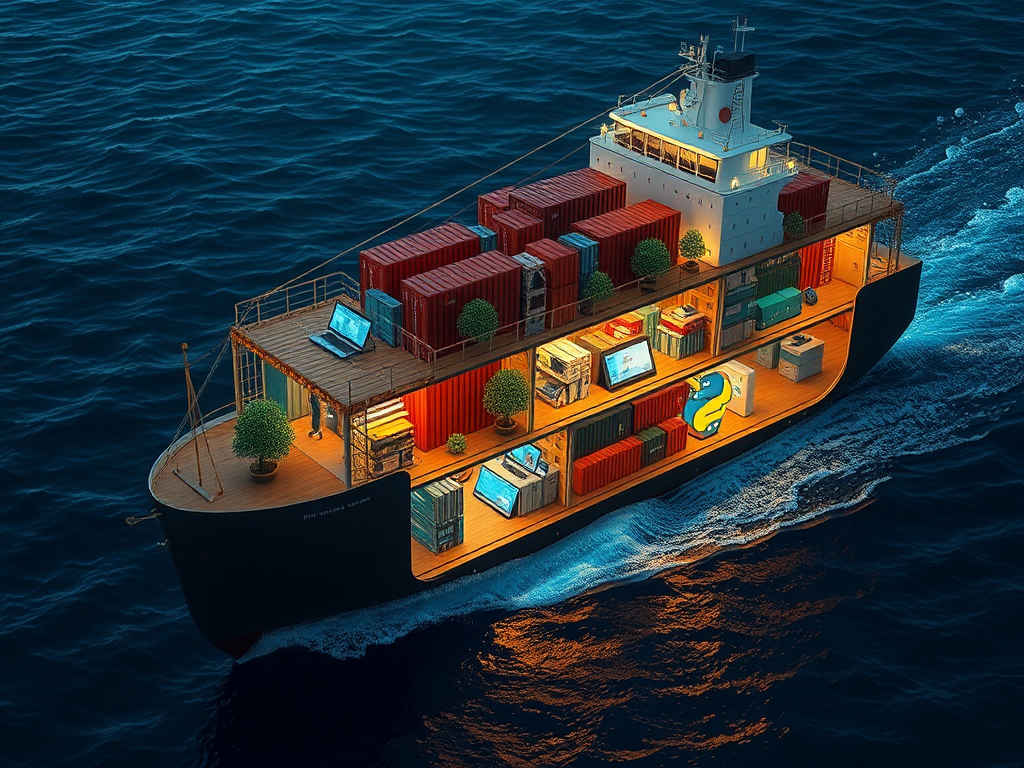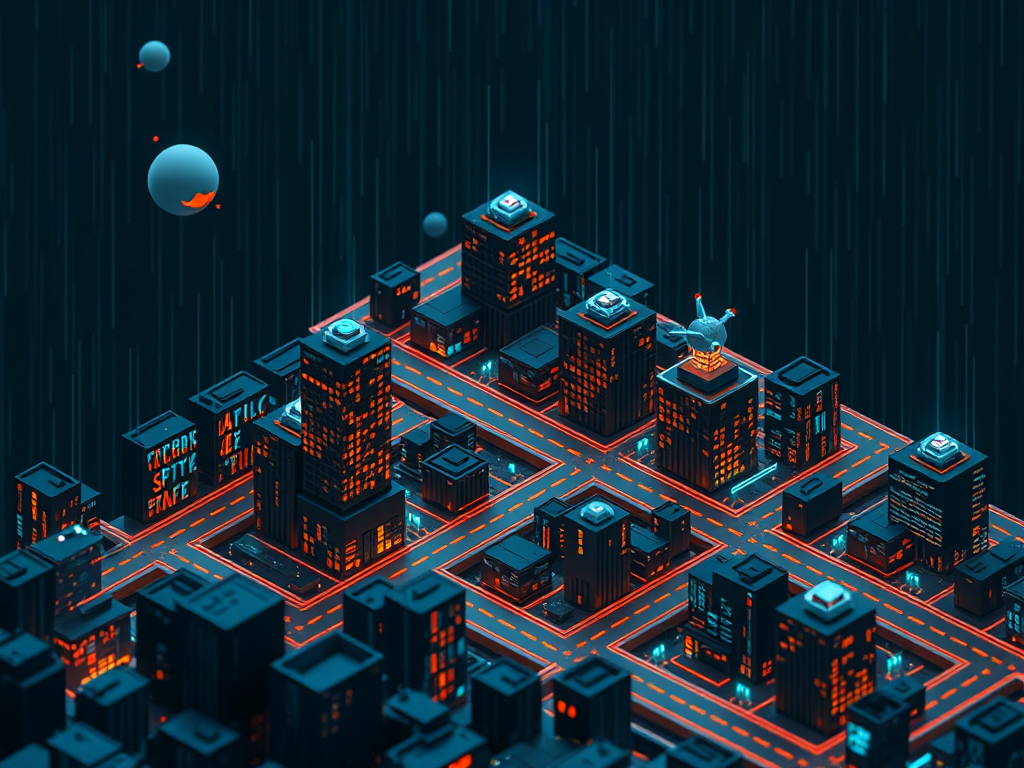Introduction
Have you ever encountered situations where your Python program runs perfectly on your computer but encounters issues when deployed to a server? Or when code fails to run properly due to environment inconsistencies among team members? These are common pain points we frequently encounter during development. Today, let me discuss how containerization can solve these issues.
Why Containerize
When it comes to containerization, many developers' first reaction might be: "Why bother? Can't we just deploy directly?" I used to think the same way. However, after years of development experience, I deeply understand the importance of containerization.
Imagine this scenario: you've developed a web application based on Python 3.9 using the latest version of TensorFlow. But in the production environment, you discover the server only has Python 3.7 and can't be upgraded due to various historical reasons. This is when you'll feel the pain of environment inconsistency.
Another example: your application depends on numpy 1.19, but the server has numpy 1.21 installed and other applications are using it. Forcibly downgrading could affect other applications' normal operation. This is the so-called "dependency hell."
Containerization technology was born to solve these problems. It packages the application and its runtime environment together, forming an independent container, ensuring consistent environments wherever it runs.
Hands-on Practice
Let's put theory into practice. First, let's write a simple Python application as an example:
from flask import Flask
import numpy as np
app = Flask(__name__)
@app.route('/')
def hello():
# Generate a random number using numpy
random_number = np.random.rand()
return f'Hello World! Random number: {random_number}'
if __name__ == '__main__':
app.run(host='0.0.0.0', port=8000)
This code creates a simple Flask application that generates a random number each time the homepage is accessed. Though simple, it depends on external libraries Flask and numpy, perfect for demonstrating the containerization process. This program uses the Flask framework to create a web service and generates random numbers using numpy. The host parameter is set to '0.0.0.0' to allow external access to the service, and port specifies the service's running port.
Next, we need to create a requirements.txt file to manage dependencies:
flask==2.0.1
numpy==1.21.0
Now, let's write a Dockerfile to define how to build our container:
FROM python:3.9-slim
RUN useradd -m appuser
WORKDIR /app
COPY requirements.txt .
RUN pip install --no-cache-dir -r requirements.txt
COPY app.py .
USER appuser
EXPOSE 8000
CMD ["python", "app.py"]
This Dockerfile is cleverly designed. First, we use python:3.9-slim as the base image, a minimized Python official image that greatly reduces the final image size. Then, we create a non-root user to run the application, an important security practice. We copy requirements.txt and install dependencies first, utilizing Docker's cache mechanism to avoid reinstalling dependencies when code changes. Finally, we copy the application code and set the startup command.
Security Considerations
When it comes to containerization, security is a crucial topic. I've seen many developers overlook this point, which is actually very dangerous.
First, we should avoid running containers as root. Notice I specifically created an appuser in the Dockerfile for security reasons. Why? Because if using root, once the container is compromised, attackers might gain root access to the host, which is extremely dangerous.
Second, we need to pay attention to dependency version management. In our requirements.txt above, we explicitly specified dependency versions. This not only ensures environment consistency but also avoids security vulnerabilities from using unsafe dependency versions.
Multi-service Coordination
In real projects, our applications rarely run alone but need to work with databases, caches, and other services. This is where Docker Compose comes in. Let's look at an example:
version: '3'
services:
web:
build: .
ports:
- "8000:8000"
environment:
- FLASK_ENV=production
depends_on:
- redis
healthcheck:
test: ["CMD", "curl", "-f", "http://localhost:8000"]
interval: 30s
timeout: 10s
retries: 3
redis:
image: redis:6.2-alpine
volumes:
- redis_data:/data
healthcheck:
test: ["CMD", "redis-cli", "ping"]
interval: 30s
timeout: 10s
retries: 3
volumes:
redis_data:
This Docker Compose configuration file defines two services: our web application and a Redis cache service. Notice we've added health checks for each service to ensure availability. We also use volumes to persist Redis data.
Performance Optimization
Regarding containerization, many people worry about performance issues. Indeed, containerization can bring some performance overhead if not properly optimized. However, these overheads are completely acceptable with the right optimization methods.
Here are some optimization tips I frequently use:
- Use multi-stage builds. For example:
FROM python:3.9-slim as builder
WORKDIR /app
COPY requirements.txt .
RUN pip install --user -r requirements.txt
FROM python:3.9-slim
WORKDIR /app
COPY --from=builder /root/.local/lib/python3.9/site-packages /root/.local/lib/python3.9/site-packages
COPY app.py .
CMD ["python", "app.py"]
This optimized Dockerfile uses multi-stage builds, separating dependency installation and actual runtime into two stages. This significantly reduces the final image size as temporary files from the build process are discarded.
- Set appropriate resource limits:
docker run -m 512m --cpus=0.5 my-python-app
This command limits the container to using 512MB memory and half a CPU core. This prevents single containers from consuming too many resources and affecting other services.
Practical Considerations
In practical use of containerization technology, I've found several details that need special attention:
- Log handling. Containerized applications should output logs to standard output rather than writing to files:
import logging
import sys
logging.basicConfig(
level=logging.INFO,
format='%(asctime)s - %(name)s - %(levelname)s - %(message)s',
handlers=[logging.StreamHandler(sys.stdout)]
)
This code configures log output to standard output, allowing unified log management through Docker's logging mechanism. It creates a formatted log handler including timestamp, log name, log level, and specific message, making logs easier to analyze and process.
- Environment variable management. Use environment variables to configure applications:
import os
DATABASE_URL = os.getenv('DATABASE_URL', 'sqlite:///default.db')
DEBUG = os.getenv('DEBUG', 'False').lower() == 'true'
This code demonstrates how to use environment variables to configure applications. It reads database connection strings and debug mode settings from environment variables, providing default values. This design makes application configuration more flexible and easier to deploy in different environments.
Monitoring and Maintenance
Monitoring and maintaining containerized applications is another important topic. We need to constantly monitor container status:
import prometheus_client
from prometheus_client import Counter, Gauge
REQUEST_COUNT = Counter('request_count', 'Number of requests received')
RESPONSE_TIME = Gauge('response_time', 'Response time in seconds')
@app.before_request
def before_request():
REQUEST_COUNT.inc()
g.start = time.time()
@app.after_request
def after_request(response):
RESPONSE_TIME.set(time.time() - g.start)
return response
This code shows how to use Prometheus to monitor application request counts and response times. It creates two monitoring metrics: a counter for tracking request counts and a gauge for recording response times. Through Flask's request hooks, we can record these metrics before and after each request.
Conclusion
Through this article, we've thoroughly explored various aspects of Python application containerization. From basic concepts to practical operations, from security considerations to performance optimization, I hope this helps you better understand and use containerization technology.
Remember, containerization isn't the goal; it's just a tool to help us better deploy and manage applications. In practice, decide whether to use containerization and how to use it based on your project's specific needs.
What do you think is the greatest value of containerization technology in your projects? Feel free to share your thoughts and experiences in the comments.




 Previous
Previous 

